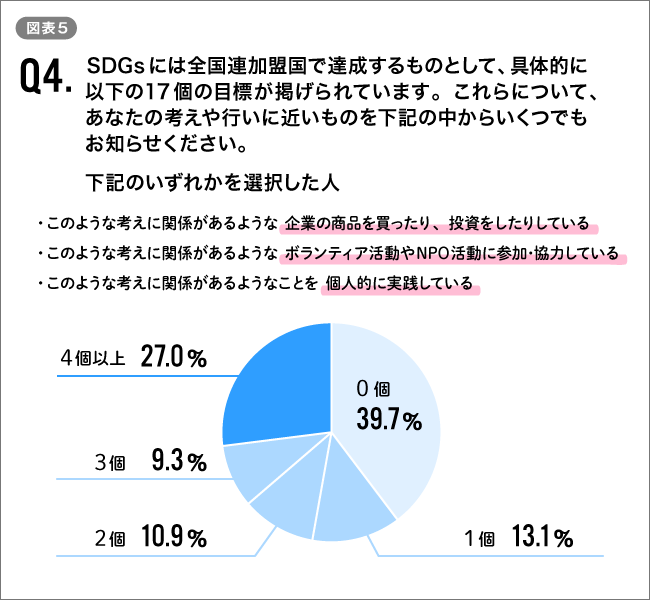Note: This website was automatically translated, so some terms or nuances may not be completely accurate.
Will SDGs Take Root in Japanese Society? — Insights from the Second Dentsu Inc. SDGs Consumer Survey
The SDGs (Sustainable Development Goals) were proposed by the United Nations in September 2015. Dentsu Inc. conducted its first consumer survey on SDG awareness and understanding in February 2018. Nearly one year later, in February of this year, we conducted the " Second Dentsu Inc. SDGs Consumer Survey," with some changes to the scale and questions. We will serialize the results and insights gained from this survey.
【Table of Contents】
▼SDG Awareness Rate: 16%!
▼SDGs Are Definitely Gaining Traction Among Students
▼Is "Awareness Rate" Everything? Actually, 60% of People Are Doing Something!
▼Who is Engaging with SDGs? Discovering "Three Key Groups"
▼Toward Widespread SDGs Adoption in Japan
SDGs Awareness Rate: 16%!
The national average name recognition rate for SDGs in this survey was 16.0%. This represents a 1.2-point increase from the first survey's 14.8%.
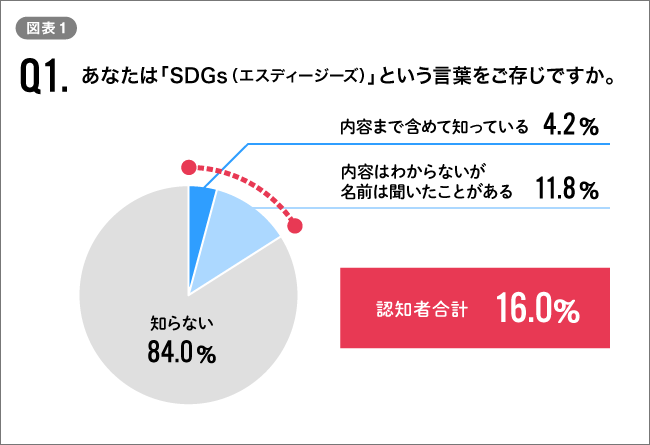
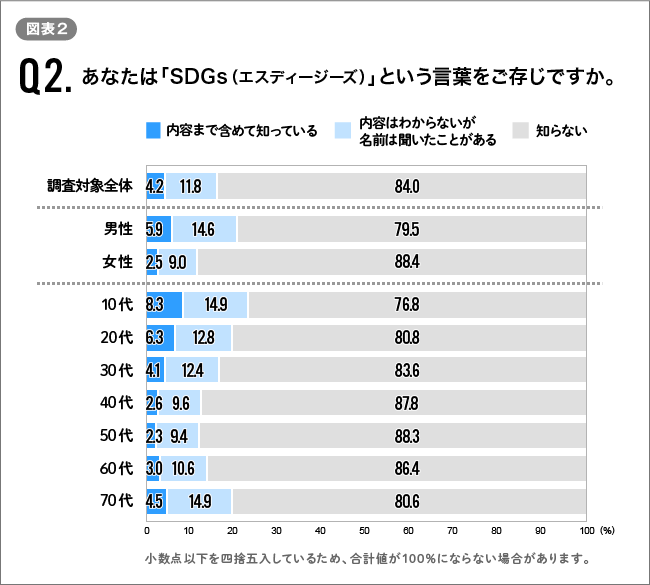
Opinions vary on whether this 16.0% level is high or low. Considering it hasn't changed significantly since last year, we believe this is still a low score indicating the early stages of awareness.
Among students, SDGs are definitely gaining traction
So, does this mean Japan's overall SDGs awareness rate remains low?
In fact, the most significant difference between the first and second surveys is the SDGs awareness rate among students. It has risen by over 10 percentage points.
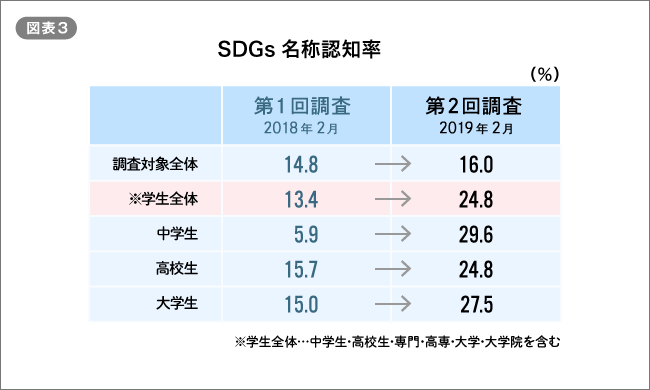
As shown in Figure 4 below, this clearly results from exposure through school classes and assignments. Indeed, when asked about sources of information on the SDGs, a very high number of responses indicated they came through school.
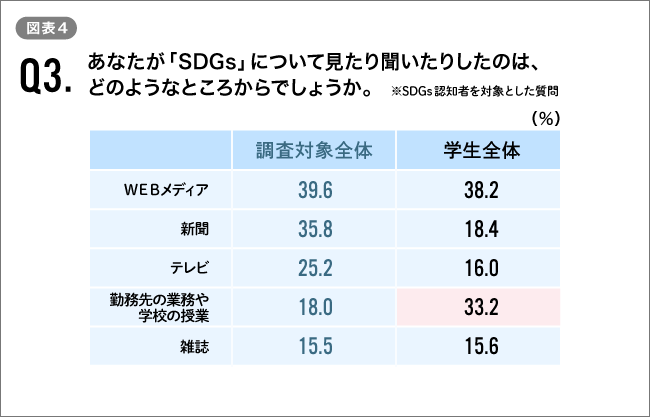
Given Japan's aging and declining population, even with increased awareness among students, the impact on overall national awareness remains limited for now. However, if this trend continues, awareness will undoubtedly grow. The 16% awareness rate could be seen as approaching a tipping point— —where small changes lead to significant shifts.
Is "Awareness Rate" Everything? Actually, 60% of People Are Doing Something!
Furthermore, is it truly sufficient to merely react to the ups and downs of the SDGs "awareness rate" score? The "SDGs" consist of 17 goals to be achieved, so the actions taken are what truly matter. In other words, the SDGs are a world where mere knowledge is insufficient; it is only through action that they gain meaning.
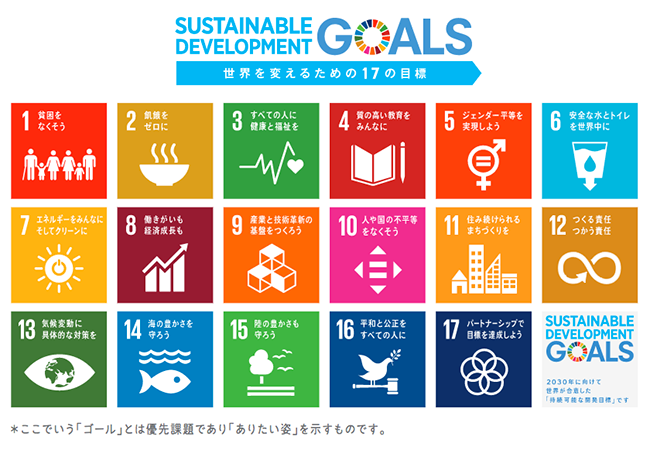
In Japan, energy conservation (included in Goal 7: "Affordable and Clean Energy") is widely adopted by many companies and households, and the habit of sorting waste (included in Goal 12: "Responsible Consumption and Production") has also become quite widespread.
Therefore, in this survey, we asked respondents—regardless of whether they were aware of the SDGs—about their level of involvement with each of the 17 goals. After explaining the content of the 17 goals,
- Do you buy products from or invest in companies working on this goal?
• Do you participate in NPOs or organizations working toward this goal?
• Are you personally practicing actions for this goal?
We defined individuals as engaged with a goal if they answered yes to any of these questions, regardless of their personal awareness of the SDGs.
The results revealed that 60% of people were engaged in at least one goal. The distribution of goals they were engaged in, by number, is as follows:
39.7% answered "nothing at all." The breakdown was: 1 goal: 13.1%, 2 goals: 10.9%, 3 goals: 9.3%, and 4 or more goals: 27%.
Who is working on the SDGs? Discovering "Three Layers"
This survey highlighted "three distinct groups" involved with the SDGs: the "Conscious Action Group," the "Knowledge-First Group," and the "Unconscious Action Group."

The "Conscious Implementation Layer" possesses knowledge of the SDGs and engages in numerous initiatives across the 17 goals. This layer is predominantly found among men in their 20s to 30s and 70s, students, and employees in corporate general affairs departments, particularly at the department head level.
The "Knowledge-First Layer" consists of individuals who are aware of the SDGs but engage in few initiatives. This group is prevalent among men overall, teenagers, students, and company employees. Position-wise, they are often deputy section chiefs or section chiefs.
The "Unconscious Action Layer" consists of individuals who are unaware of the SDGs but actually engage in numerous initiatives related to the 17 goals. This layer is predominantly found among women in their 60s and 70s, including full-time homemakers and stay-at-home dads.
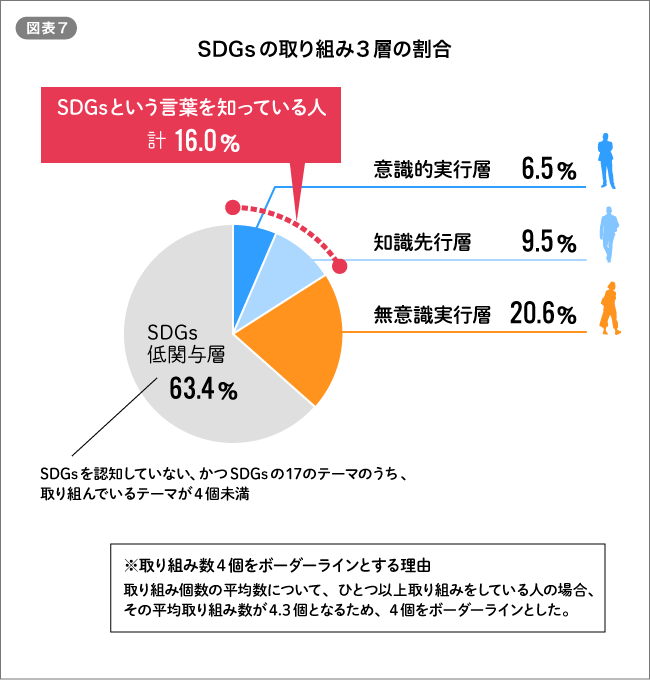
Among the 16% who know the term SDGs, two segments exist: the "Conscious Action Group" (6.5%) and the "Knowledge-First Group" (9.5%).
A key finding is the significant presence (20.6%) of the "Unconscious Action Group" – people who "didn't know about SDGs but are unknowingly tackling SDG issues." Conversely, there are also those (9.5%) who "know the name SDGs but have yet to take action." The "Unconscious Action Group" alone exceeds the SDG awareness rate. Their actions can also contribute to realizing a "sustainable world."
Fundamentally, awareness of the SDGs is higher among men. This is likely not unrelated to the fact that their penetration has been more advanced in business settings. For example, the Japan Business Federation (Keidanren) added language regarding the SDGs to its "Corporate Charter" in November 2017.
However, excluding teenagers, women outnumber men in the "Unconscious Action Group" across other age groups. This analysis of SDGs initiatives and women will be covered in detail in future installments on .
Toward SDG Adoption in Japan
The reality is that many people in Japan are not "not doing" the SDGs, but rather "doing things that seem like SDGs without realizing their actions align with the SDGs."
Therefore, there is significant potential for Japanese people to connect with the very worldview the SDGs promote. Companies and local governments should give full consideration not only to those already aware of the SDGs but also to the "Unconscious Action Group" as customers and stakeholders.
Communicating to the "unconscious implementers" that "the actions you take every day are called the SDGs" creates a foothold for sharing the common language of the SDGs among various stakeholders, including companies, local governments, and customers. This will also contribute to branding and engagement building for companies and local governments.
Among consumers, many people resonate with the SDGs' vision if given the opportunity to learn about them. Consequently, once awareness of the SDGs is established, expectations for companies and local governments engaging with them also rise. In this survey, we informed respondents about the SDGs through the questionnaire before asking about their willingness to engage with them. The following data is one example, with the notably high "agree" responses among younger people being particularly noteworthy.
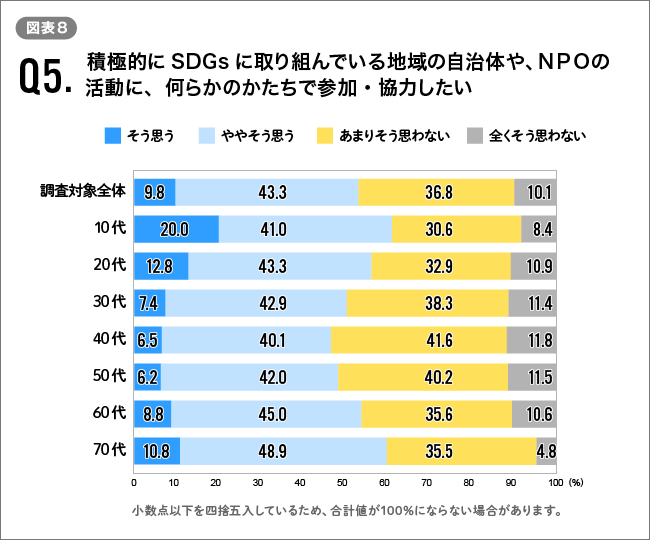
【Dentsu Inc. Team SDGs】
An internal cross-departmental team dedicated to researching and developing various solutions to drive innovation toward achieving the SDGs, as well as disseminating related information.

【Survey Overview】
● Survey Name: 2nd Survey on SDGs Among Consumers
● Target Area: Nationwide, Japan
● Target Population: Men and women aged 10 to 70
● Sample Size: 6,576 people
For analysis, data was weighted to reflect each prefecture's population ratio and Japan's overall age and gender composition.
●Survey Method: Internet survey
●Survey Period: February 7–18, 2019
●Survey Agency: Dentsu Macromill Insight, Inc.
The major difference from the first survey is the significant increase in sample size, enabling analysis by all 47 prefectures. Consequently, the sample allocation conditions differ from the previous survey. Therefore, some sections reference the national average values (GT values) from the first and second surveys as reference points.
Was this article helpful?
Newsletter registration is here
We select and publish important news every day
For inquiries about this article
Author

Hayashi Yu
Dentsu Inc.
Third Integrated Solutions Bureau
Since joining the company, I have been in the marketing field, primarily working in the areas of government, public affairs, and social issues. I am also a member of Team Dentsu SDGs.
